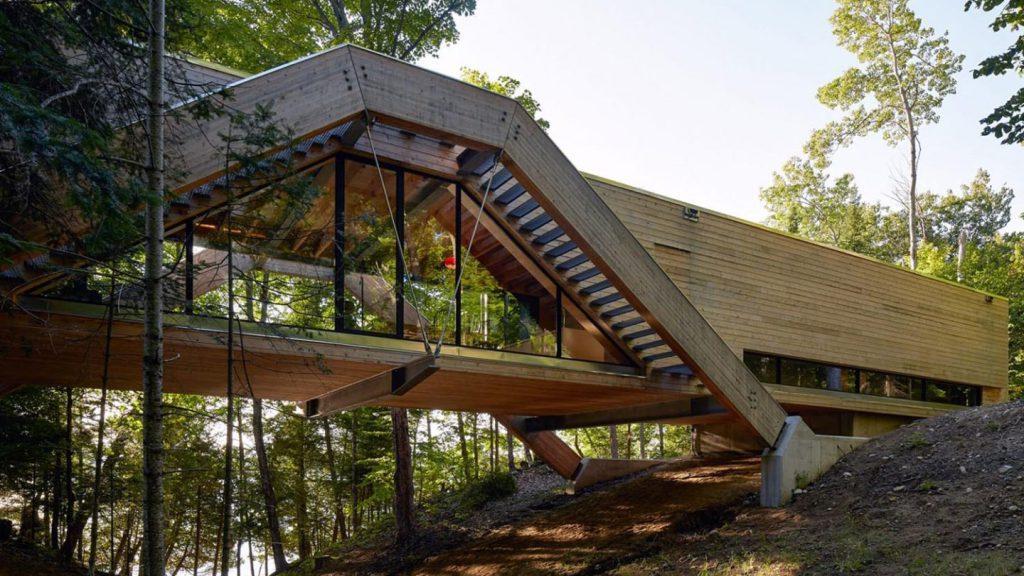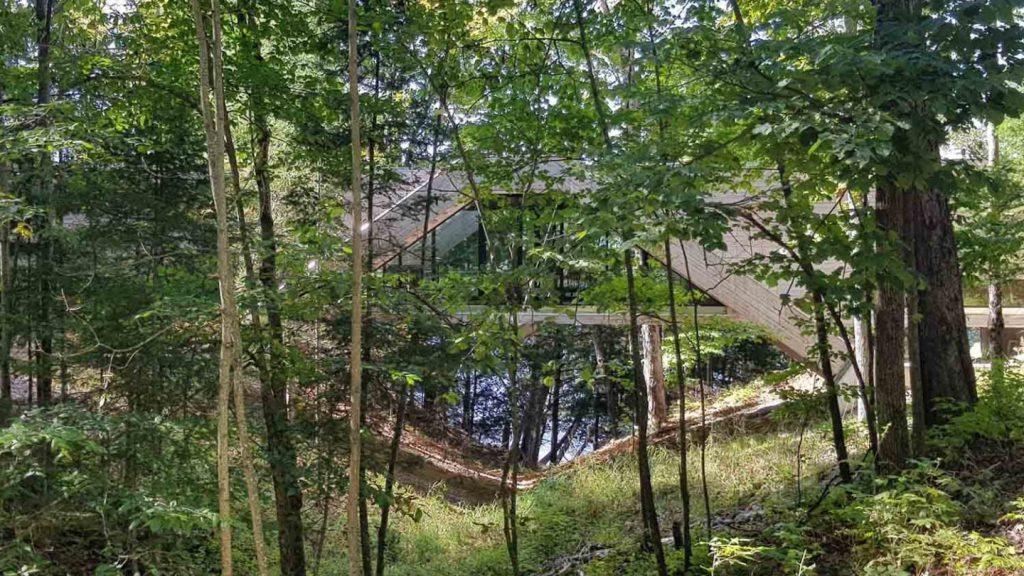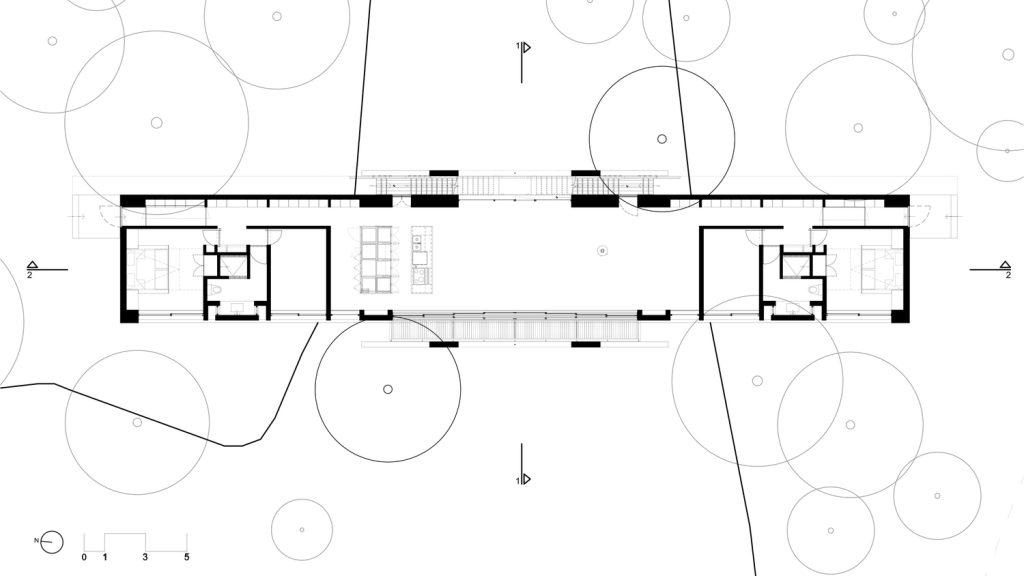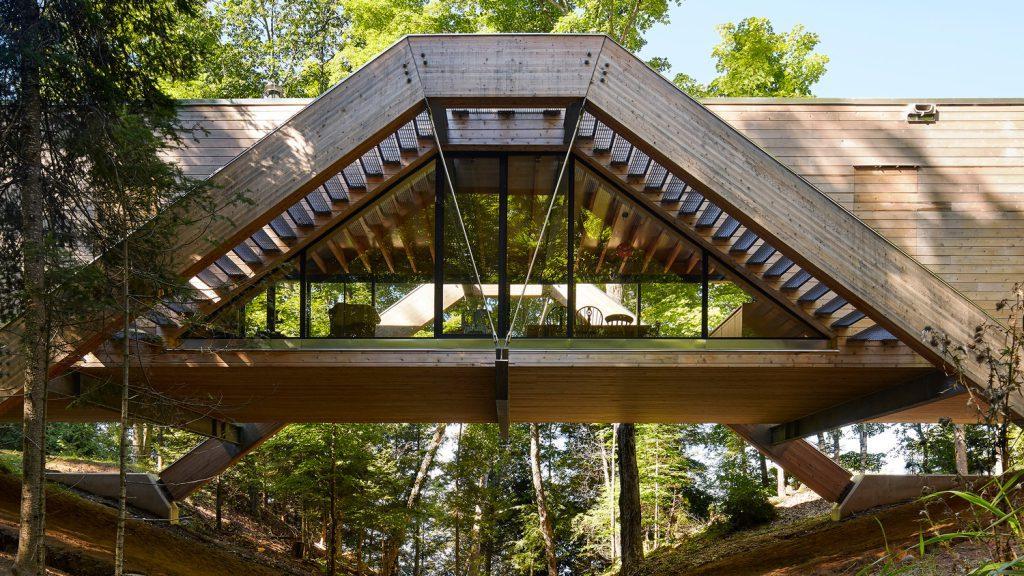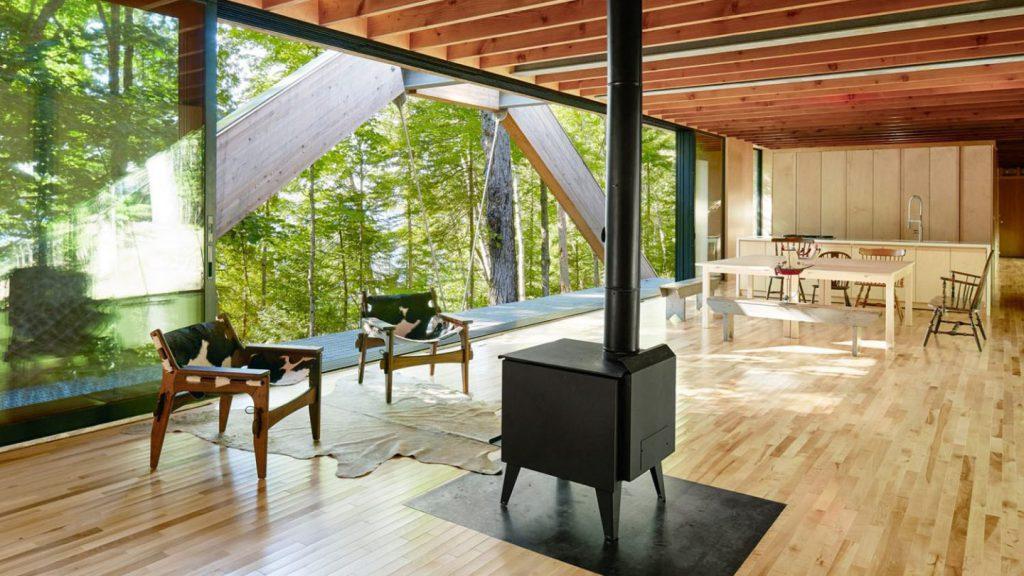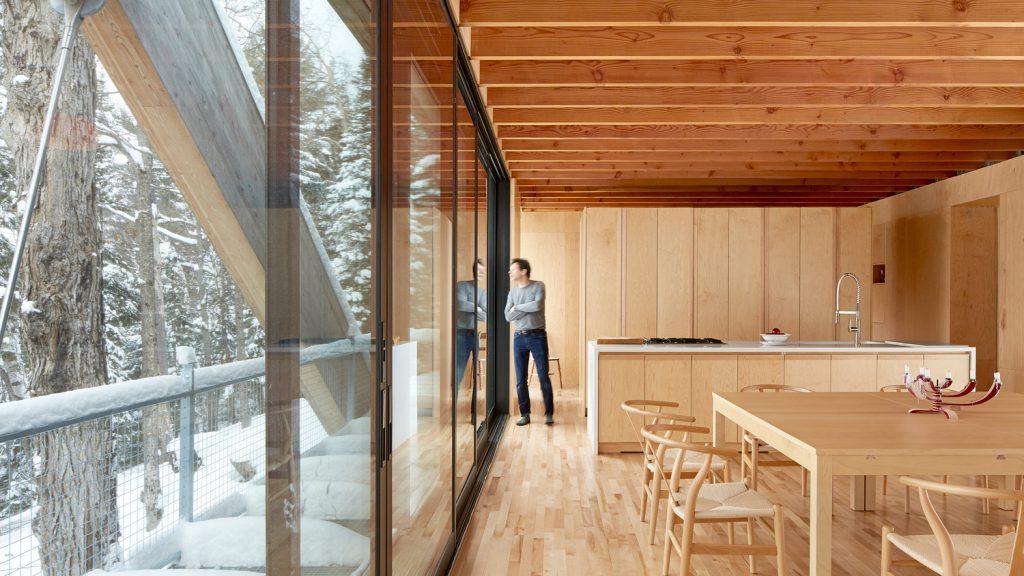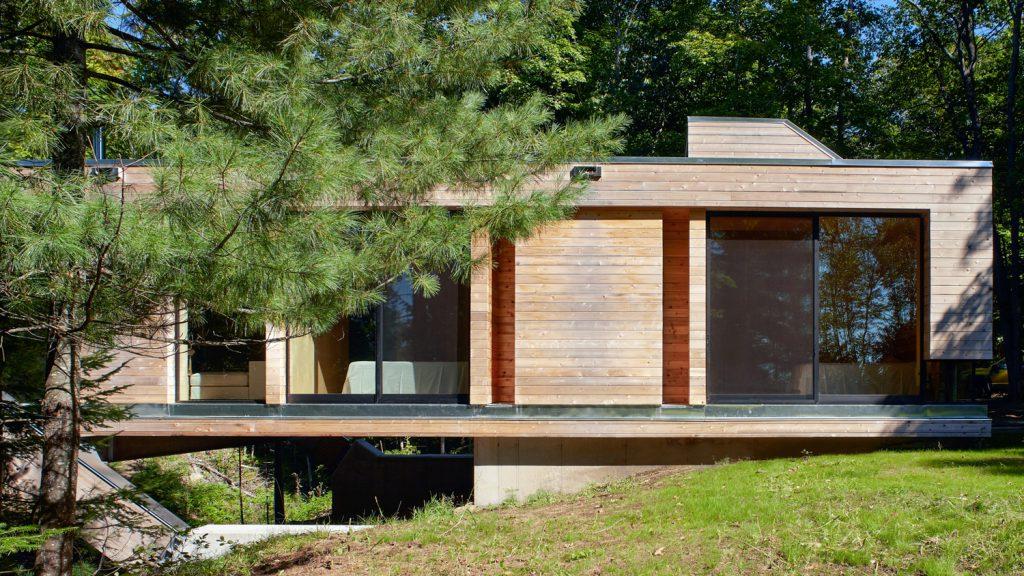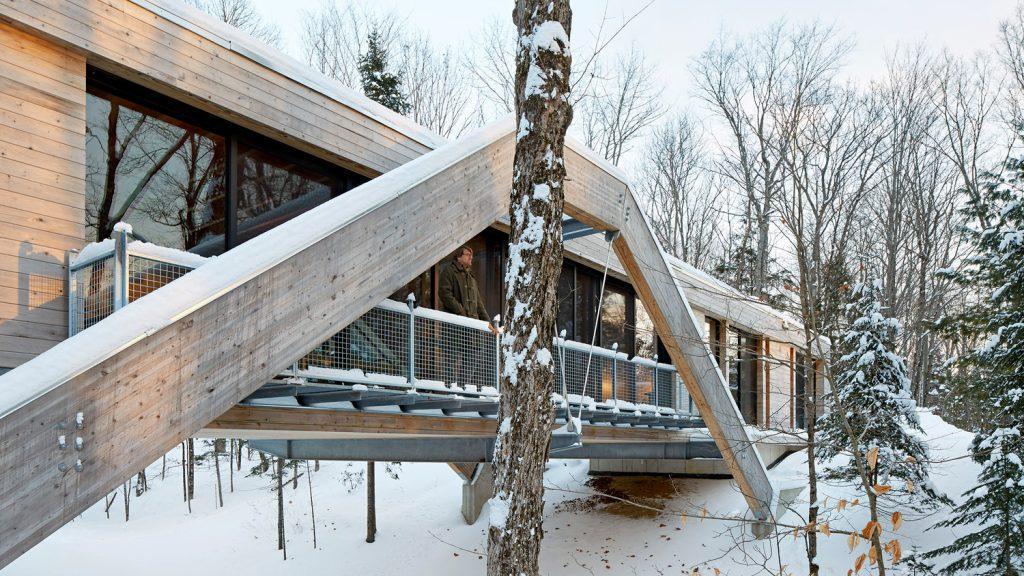Building bridges at home
Five metres above the ground, a private residence straddles a channel that runs through woodland. It seems more like a suspension bridge in its approach, and this house indeed has a very similar design. Called the Bridge House, this structure by architectural studio LLAMA definitely lives up to its name.
There are many ways to construct a building with the least possible impact on its natural surroundings. These include placing the foundations on individual pillars or integrating various projecting elements into the design. However, the idea developed by LLAMA Urban Design for a residential house in Muskoka, Canada, is quite out of the ordinary. Company cofounders Mariana Leguia and her husband Angus Laurie have conceived a wooden house that acts as a bridge. It also has the least possible contact with the ground. Effectively, it is a house that is distinctly set apart from all other architectural structures in the vicinity.
When the couple returned to Canada after living in Peru, they wanted to escape the busy city life in Toronto and decided to move to Muskoka, on the shores of Lake Mary, and a 15-minute drive from Huntsville. Equipped with their own design for a new home, they proceeded to build the Bridge House. With a floor area of 230 square metres, it is 38 metres long and six metres wide.
Anchored to the ground
Resting on solid concrete foundations on both sides, the house stretches between large maple trees five metres above a small ravine. Its main structure is supported by two large beams at the sides of the house which are anchored in the foundations. The front view shows the trapezoidal timber “bridge facade” positioned on top of these beams.
The Bridge House is additionally supported by two inverted V struts made of Douglas fir glulam which are held by steel girders. One of these struts provides an exterior flight of steps up to the 185-square-metre rooftop terrace. The suspension design allows the construction to float above the forest floor over a length of 18 metres like a “true” suspension bridge that is anchored to the ground.
Central stove
The walls and roof of the house are made out of native cedar owing to its structural characteristics and resistance to rotting. Maple plywood boards were chosen for the interior.
The architects observe that the 12-metre-long glazing on both sides of the house turns the cooking/eating/living area into a “projection screen to the subtle movements of nature”. An interplay of light and shade from the trees as they sway in the wind creates a constantly changing ambience inside the large space, which was deliberately furnished sparsely. The centrepiece of the house is its free-standing wood-burning stove – which comes in very handy during those Canadian winters. Especially when the floor has nothing underneath it for extra warmth!
Rooms in mirror image
The glass walls in the living area can be opened fully. While the west-facing side towards the lake opens out onto a balcony, on the other side the roof can be accessed via a metal staircase. The two “ends” of the house are identical – albeit in mirror image. Each has an entrance, two bedrooms, a bathroom, and also stairs leading down to the cellar in the concrete foundations.
Along the side of the house next to the forest, two hallways extend from the entrances to the living room and connect up the other rooms. Wooden shelving and wardrobes offer storage space inside the Bridge House, which has a minimalist interior design.
Private paradise
There is direct access to the forest from the bedrooms at ground level, next to the “bridge supports”. In fact, long walks are an absolute must here. After all, the plot of land is about 20,000 square metres and comes with private access to the lake.
Nonetheless, Mariana Leguia and Angus Laurie have already chosen to leave their luxury private paradise. After living there for a short time, they put their Bridge House up for sale. Purchase price: almost 3.9 million Canadian dollars – approx. 2.6 million euros.
Text: Michi Reichelt
Translation: Rosemary Bridger-Lippe
Images: A-Frame/Ben Rahn
